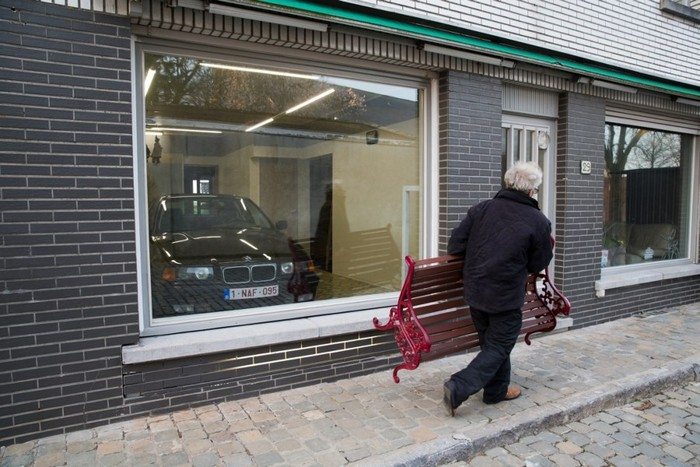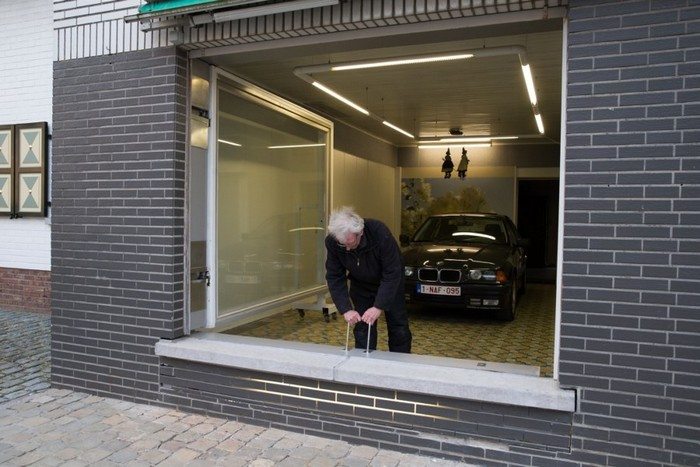
The government said he is not allowed to build a garage door, so he didn’t. Or at least that’s what they think!
Erik Vekeman, a villager from Zegelsem in Belgium, wanted to convert part of his wife’s former grocery store into a garage. But because the village is being protected and preserved, the local municipality denied him the permit to install a garage door.
 His solution? Plain ingenious! With 500 euros and hardwork he was able to turn the building’s façade into the garage door itself! The window and the wall right below it swings open, allowing him to drive his car out and park it back inside.
His solution? Plain ingenious! With 500 euros and hardwork he was able to turn the building’s façade into the garage door itself! The window and the wall right below it swings open, allowing him to drive his car out and park it back inside.
 He says he can get his car out of the garage in less than two minutes, but he still has plans to automate his secret garage door for faster operation.
He says he can get his car out of the garage in less than two minutes, but he still has plans to automate his secret garage door for faster operation.
What can you say about his story? Let us know through the comments section!
Click on any image to start lightbox display. Use your Esc key to close the lightbox. ?














